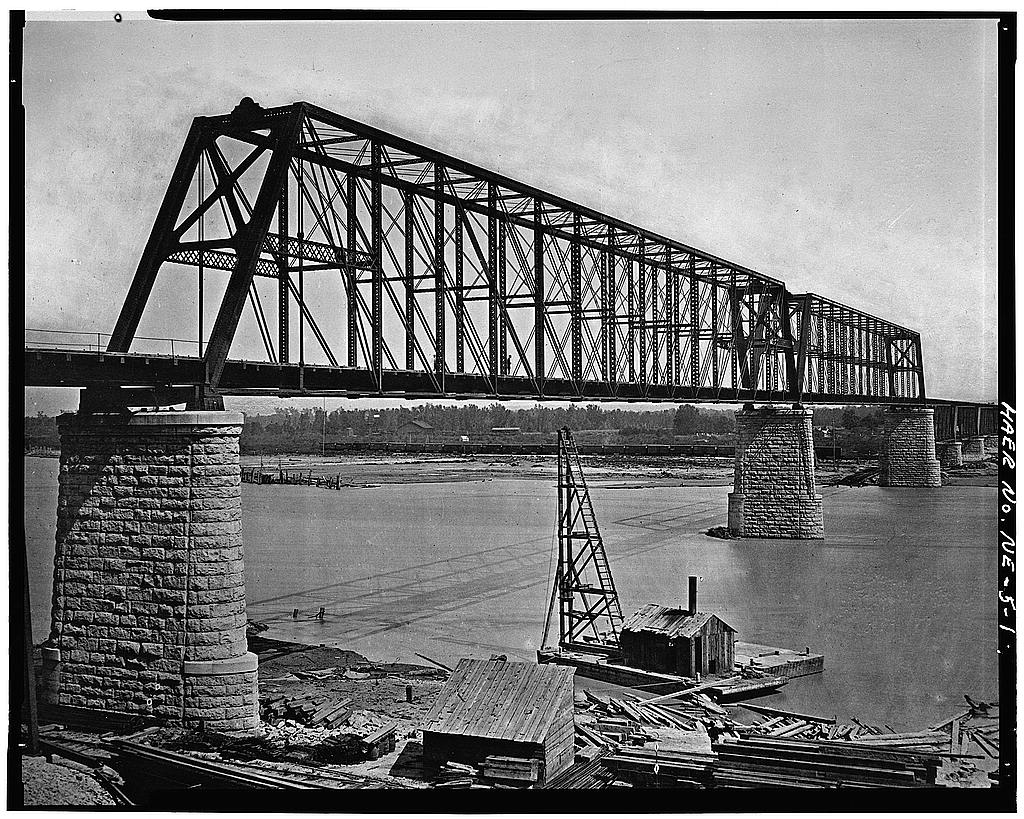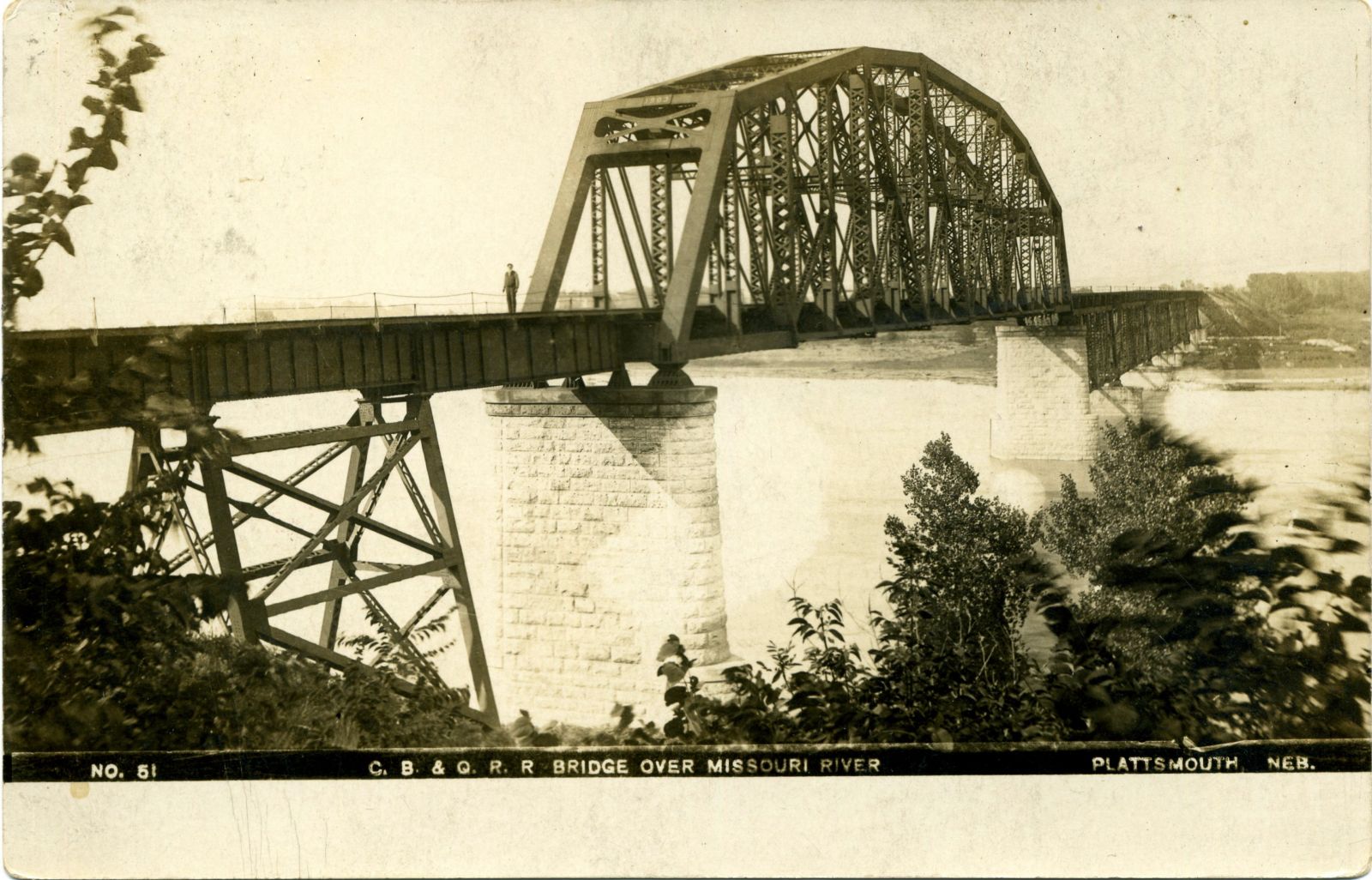By 1870, the line would be completed to East Plattsmouth, Iowa. This location was set on the Missouri River.
Just across the river, in Plattsmouth, the Burlington and Missouri River Railroad of Nebraska continued building west.
The railroad reached Ashland by 1870, and Lincoln later that year. The expansion would continue west, ultimately reaching Denver.
The lines were purchased by the Chicago, Burlington & Quincy Railroad in 1875. To the east, the Iowa line connected to Chicago, via Burlington.
By 1880, the CB&Q completed a large bridge across the Missouri River at Plattsmouth, connecting the two lines.
Throughout the early 20th century, the line would be upgraded. In Iowa, many sections were constructed double track between Creston and Pacific Junction.
In Nebraska, the Ashland to Lincoln section was constructed double track in 1910.
The line served as a broader connection, connecting Denver and Chicago.
By 1970, the CB&Q merged with Great Northern and Northern Pacific to form Burlington Northern.
In 1996, BN merged with the Atchison, Topeka & Santa Fe to form BNSF Railway, who currently owns this line.
Presently, the Creston to Lincoln section is known as the Creston Subdivision, and sees a steady traffic base.
04/03/22
The Plattsmouth Bridge is one of the most impressive bridges across the Missouri River, and contains one of the largest single spans.
This structure, and its successor, the New Bridge both contain massive 402 foot main spans, rivaled by few spans. They sit parallel to old US-34, now County L-35/Livingston Road.
The previous structure at this location was built in 1880, and consisted of two large 400-foot Whipple Through Trusses, similar to many other Missouri River crossings. These spans were designed by George S. Morison, and were approached by three deck truss spans on the Iowa side. The through trusses were built by Keystone Bridge Company, while the deck trusses were constructed by Kellogg & Maurice Bridge Company. The substructures were constructed by William Sooysmith.

Photo of the previous bridge
By 1903, it was desired to build a new crossing at this location, and work began that year.
The old through trusses found their way to central Iowa, where they would cross the Des Moines River at Tracy. Unfortunately, they were demolished in 1950. Two of the deck trusses would be reused on the 1903 bridge, and it is unknown what happened to the other deck truss.
The new 1903 bridge featured a single, 402 foot main span consisting of a 16-panel, pin connected Pennsylvania Through Truss. This span features heavily built up members, typical of large spans crossing major rivers.
It is approached by a pair of 8 panel, pin connected Pratt Deck Trusses with lengths of 202 Feet each. These spans replaced the other large span from the old bridge.
In addition, two 200 Foot and a single 198 foot Pratt Deck Trusses are built on the Iowa side, each with 8 panels and pin connections. The easternmost of these spans is a 200-foot span, originally built in 1880. In 1903, two of the old deck truss spans were doubled and reused on the new bridge.
In addition, three deck girder spans were constructed on the Nebraska side, and a single 90-foot span on the Iowa side. In 1913, a concrete arch span was added on the Iowa side.
Further alterations came in 1914, when one of the piers was banded to prevent it from splitting. The original Nebraska approach was upgraded in 1976 with two deck girder spans, and a steel stringer span. These deck girders appear to have been reused from another location. These replaced the original approach in 1976, when the hill on the Nebraska side of the bridge was carved out.
The substructures are all stone, except for the end approaches on either side. An epoxy was injected into the west pier in 1989, and the deck trusses were rehabilitated in 1993.
The plates on the bridge are on the portals, and endposts of the main span. These can be clearly seen stating the bridge information.

Historic photo of the bridge
Presently, the bridge only serves westbound coal empties and general merchandise traffic. Structurally, it is in great condition. However, a new span was opened next to the bridge as part of a capacity increasing project.
The hope is that this bridge will continue to serve traffic for many years to come.
Views can be had on top of a bluff or from River Road in Nebraska. In Iowa, many views are possible around Karns Road.
The author has ranked this bridge as being highly significant, as an example of a double tracking project which saved the historic structure.
One of the most unusual aspects of this bridge is the reuse of two deck trusses from the previous bridge. While reusing spans is not uncommon for railroads, it is unknown why it was decided to reuse one span at this location.
The photo above is an overview from the top of a bluff in Nebraska. The old bridge is on the left, while the new bridge is on the right. I-29 and the Loess Hills can be seen in the distance.
| Upstream | Omaha Rail Bridge |
| Downstream | New Plattsmouth Rail Bridge |
